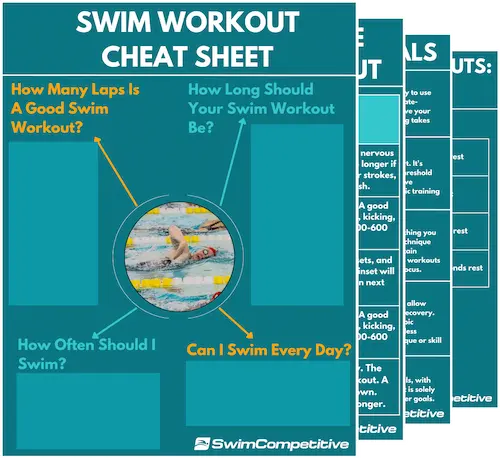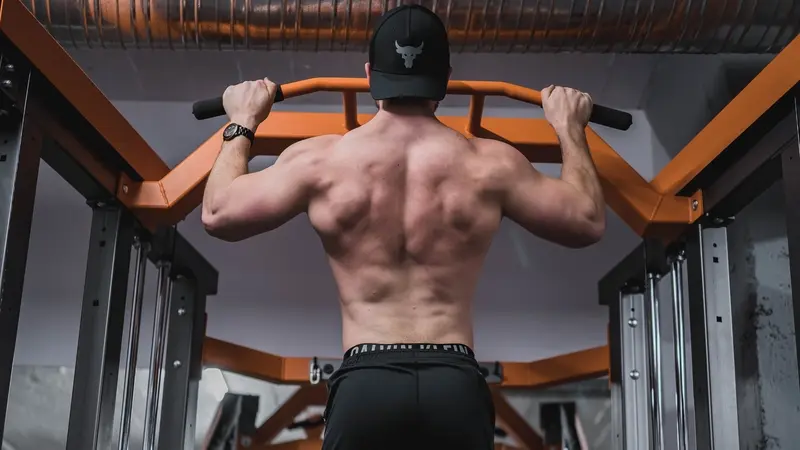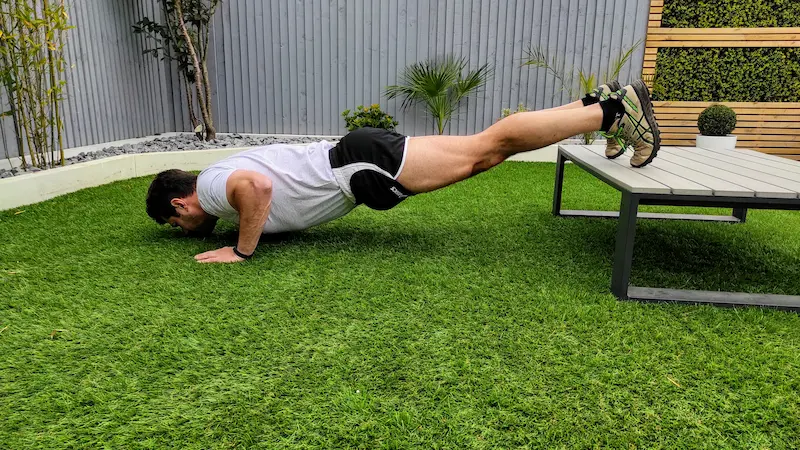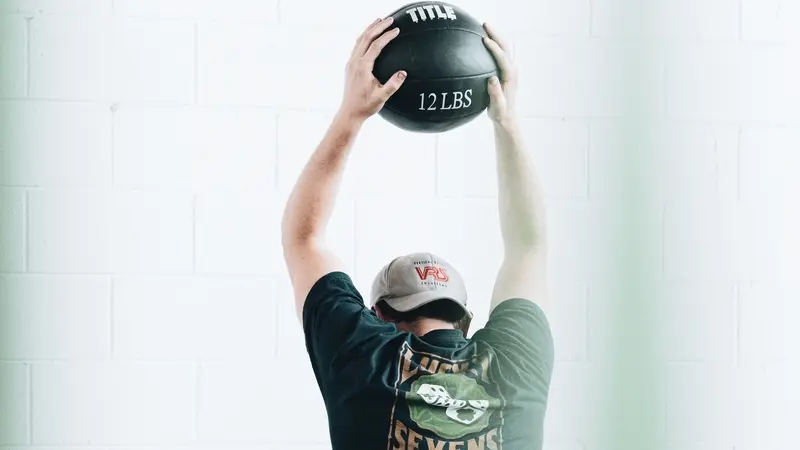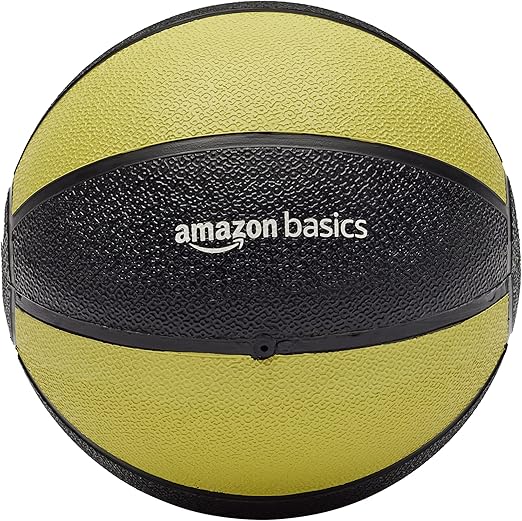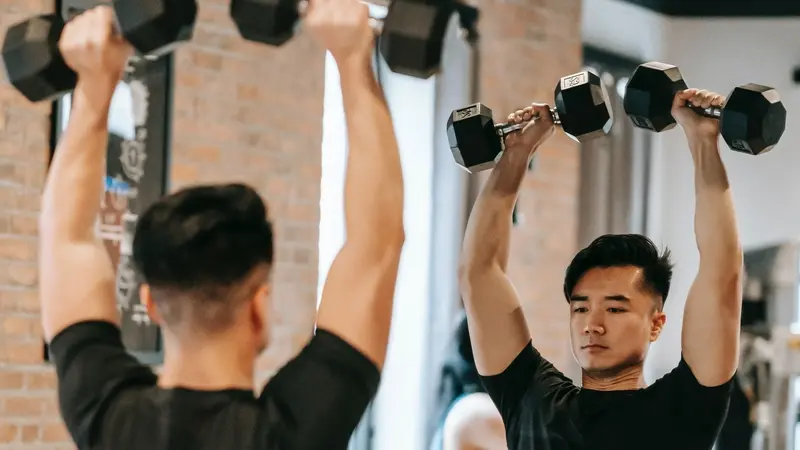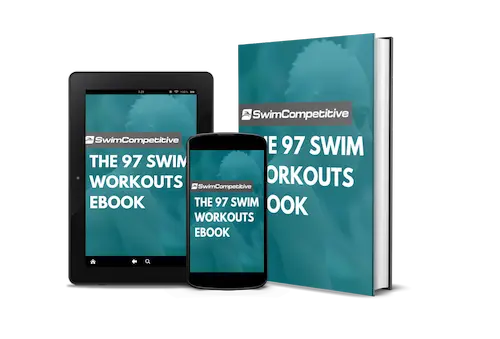Did you know that upper-body strength is strongly correlated with swimming performance for both sprinters and distance swimmers? This is according to a study published in the International Journal of Sports Medicine.
So how would it feel to know that you can improve your swimming performance and reduce your risk of injury without spending a single second extra in the pool?
Well, stick around because, in this article, I share the nitty-gritty of how you can do just that.
Upper Body Exercises for Swimmers: Strength, Power, Speed!
Here are the best upper body exercises for swimmers:
- Pull-Ups
- Push-Ups
- Deadbug
- Medicine Ball Slams
- Dumbbell Overhead Press
- Dumbbell Floor Press
- Plank
- Kettlebell Swings
- Rows
- Wall Angels
- Opposite Hand and Leg Lifts
1. Pull-Ups
Pull-ups are widely considered one of the most useful upper body exercises for swimmers.
A study published in the Journal of Strength and Conditioning Research found significant correlations between maximal pull-up strength and swimming performance.
The pull-up engages various major muscle groups, including the back, shoulders, and arms. They also serve as a great core exercise by forcing you to use your abdominal muscles to stay stable.
Furthermore, pull-ups are great for improving grip strength, linked to enhanced swimming performance, as noted by a study published in the Journal of Perceptual and Motor Skills.
Grip strength can also help reduce shoulder or elbow injuries.
Correct Pull-Up Technique:
The pull-up is a relatively simple exercise to perform. Still, there are some critical technical factors to take into consideration.
First, pick a grip that’s comfortable for you and suits your strength level.
Types of grips:
- Overhand grip: This is the most common grip and is when your palms face away from you. I generally recommend the overhand grip. It’s also the most challenging.
- Underhand grip: In this variation, your palms will face you. Technically, this is considered a chin-up and will engage more of your bicep muscles, making it easier to do than a pull-up. Beginners can use this grip to start out.
- Neutral grip: As the name suggests, this is when your palms face each other. This pull-up variation requires a special bar with handles to allow for a neutral grip. It’s also an easier variation and good for swimmers new to pull-ups.
How swimmers can perform a pull-up correctly:
- Start by hanging from the bar with your arms shoulder-width apart and fully extended.
- Your feet should be off the ground.
- Use your back and arm muscles to pull your body up until your chin is over the bar.
- Then, lower yourself back down to the starting position and repeat.
It’s essential to keep your body straight by engaging your core muscles to avoid any swaying or momentum.
Once you can do 10-15 reps with good form you can make pull-ups harder by using a weight belt or a weighted vest.
What If I’m Not Strong Enough to Do Regular Pull-Ups?
If you’re new to pull-ups or find them difficult, there are a few pull-up variations you can use to build up strength until you can start doing regular pull-ups.
- Assisted pull-ups can be done using a resistance band or by having someone spot you.
- Negative pull-ups are when you lower yourself down in a slow and controlled fashion. This can help build strength and improve your regular pull-up’ form. You can jump up and lower yourself or use a raised platform to grab hold of the bar and lower yourself from there.
- Lat pull-downs: This is a machine variation of pull-ups. It’s technically a completely different exercise and engages fewer muscle groups. However, it can be a useful way to help work into regular pull-ups if you combine it with one of the other pull-up variations mentioned above.
Ideal for assisted pull-ups and many other dryland exercises that swimmers can perform.
2. Push-Ups
Like, pull-ups, push-ups are a great way to engage multiple muscle groups at once including your arms, shoulders, chest, and core–all critical in swimming performance.
Push-ups are a simple exercise and, for the most part, don’t require any special equipment, which is precisely what makes them so effective.
Another reason I like push-ups for swimmers is that there are many variations to progress through, overload, and challenge you to become a better swimmer.
How to do a push-up correctly:
- Start in a high plank position with your feet hip-width apart and your hands slightly wider than shoulder-width.
- From here, lower your body until your chest is just above the ground.
- Then push back up to the starting position.
Remember to keep your core engaged throughout the entire movement and avoid letting your hips sag or arch.
Pro Dryland Tip: Make sure to engage and brace your core in all exercises. This allows you to perform exercises with proper technique, significantly reduces your risk of injury, and helps to develop strength.
Push Up Variations to Make It Easier for Swimmers (Beginners Only!):
- Knee push-ups: the standard push-up, but on your knees. You can use it to build up to more challenging variations.
- Incline push-ups: same as the regular push-up, but place your hand on an elevated surface like a bench, chair, or steps. The bigger the incline, the easier.
- Negative push-ups: the idea is the same as the negative pull up, start at the top and slowly lower yourself down to the floor, then reset and repeat. This is a great way to build up strength.
Push Up Variations to Make It More Challenging for Swimmers:
- Strict push-ups: the standard variation everyone knows, and it’s very effective for strength. You can use a weighted vest to make it harder.
- Wide-grip push-ups: places more emphasis on the chest muscles.
- Triangle/ diamond push-ups: increases tricep engagement.
- Pike push-ups: great for developing strong shoulders.
- Staggered hands push-ups: increases core activation for stability.
- Spiderman push-ups: helps to build additional core strength and makes the regular push-up more challenging.
- Cross-body push-ups: puts the focus on the core, hip flexors, and shoulders.
- Archer push-ups: engages one side of the body more and can be used to train for one-arm push-ups.
- Plyometric push-ups: adds elements of explosiveness and power which is excellent for developing a powerful stroke and improving reaction times in the water.
- Decline push-ups: increases muscle activation and makes the standard push-up harder as the decline increases.
- Feet stacked push-ups: this is where your ankle is crossed over the other so that only one foot is on the ground. It increases core activation.
- Medicine ball push-ups: great for training speed, power, and stability.
- Dumbell row push-ups: A hybrid exercise where you combine the push-up with a rowing movement by holding a dumbbell in each hand. Great for additional back strength.
- Weighted push-ups: using equipment like a weighted vest you can increase the resistance to make push-ups harder and increase strength.
3. Deadbug
The dead bug is an excellent exercise for swimmers because it helps build core strength and stability. The core is an important muscle group for swimmers because it helps keep the body stable and in alignment while swimming. The dead bug also helps improve coordination and balance, which is essential for fast swimming.
How to do the dead bug with proper technique:
- Start by lying on your back with your knees bent and feet flat on the ground.
- Place your hands behind your head and engage your core muscles.
- Slowly lower one leg to the ground and return it to the starting position.
- Repeat with the other leg.
- Continue alternating legs for the desired number of repetitions.
- To make the exercise harder, try straightening your arms and legs or add light dumbbells, kettlebells, or ankle weights. You can also use a stability- or a medicine ball.
4. Medicine Ball Slams
This exercise is excellent for swimmers because it helps to build power and explosive strength. It also helps to improve coordination and develop a strong core.
This is especially helpful for improving your starts, push-offs, and breakouts.
Med ball slams engage the arms, shoulders, chest, back, and core muscles.
How to do medicine ball slams correctly:
- Start by standing with your feet shoulder-width apart and holding a medicine ball in both hands.
- Engage your core muscles and raise the ball above your head.
- Then slam the ball down onto the ground as hard as you can.
- Pick the ball up and repeat the movement.
- Start with a light ball and gradually increase the weight as you get stronger.
That said, the medicine ball slam is less about how heavy you go and more about how fast and explosive you can perform each exercise repetition. This is generally an exercise where more repetitions will benefit you.
5. Dumbbell Overhead Press
The overhead press is an excellent exercise for swimmers because it helps build strong shoulders and core stability.
The shoulder muscles are essential in swimming because they help generate power and speed while stabilizing your stroke. Additionally, strong core muscles ensure a tight streamline, allowing you to cut down on resistance in the water.
The dumbbell overhead press has a few variations to choose from:
- Standing Dumbbell Overhead Press: The exercise is performed in the standing position. This is a challenging variation since it involves your whole body to keep you stable.
- Seated Dumbbell Overhead Press: This is where you sit on a bench while your back is supported and perform the exercise. It helps to isolate the shoulder muscles and upper chest.
- Unsupported Dumbbell Overhead Press: This exercise is only recommended for stronger, experienced swimmers. To perform it, you are seated without any additional back support. It’s essential to keep your core tight and back straight while doing this exercise. The benefit is increased core activation.
How to do a dumbbell overhead press with proper technique:
- Start by standing with your feet shoulder-width apart or in a seated position and hold a dumbbell in each hand at shoulder level.
- Engage your core muscles and press the dumbbells overhead.
- Lower the dumbbells back to shoulder level and repeat.
- It’s essential to keep your core engaged throughout the exercise so that you don’t arch or put strain on your lower back.
- Also, press the weights straight overhead and not behind your head.
- Start with a light weight and gradually increase the weight as you get stronger.
Do You Want to Make Every Lap Count?
Stop wasting your time in the pool feeling lost and doing directionless swim workouts, and start training effectively! Our ebook contains 97 structured and goal-orientated swim workouts to help you become a better, faster, and fitter swimmer. Whether you’re a complete beginner or a seasoned pro, there are a multitude of workouts for every type of swimmer.
6. Dumbbell Floor Press
The dumbbell floor press is a variation of the bench press. It’s an excellent exercise for swimmers because it helps build strong shoulder and chest muscles.
Similar to the bench press, the floor press is also particularly effective for strength gains.
The dumbbell floor press is a very practical exercise for swimmers. It allows you to train the traditional bench press style strength movement but with a reduced risk of shoulder injury due to a smaller range of motion.
How to do a dumbbell floor press with proper technique:
- Start by lying on the floor with your feet flat on the ground.
- Hold a dumbbell in each hand at shoulder level.
- Engage your core muscles and press the dumbbells up towards the ceiling.
- Lower the dumbbells back to shoulder level and repeat.
- Make sure to turn your arms slightly inward when you start the exercise at about a 30-45˚ angle. This will help to protect your shoulders from injury.
Why Dumbbells? Both dumbells and barbells have their place in your dryland and gym routine. However, generally, I recommend dumbbells. They reduce muscle imbalances by training each side of your body individually and allow for a more flexible range of motion in exercises. They also challenge you to stay stable.
7. Plank
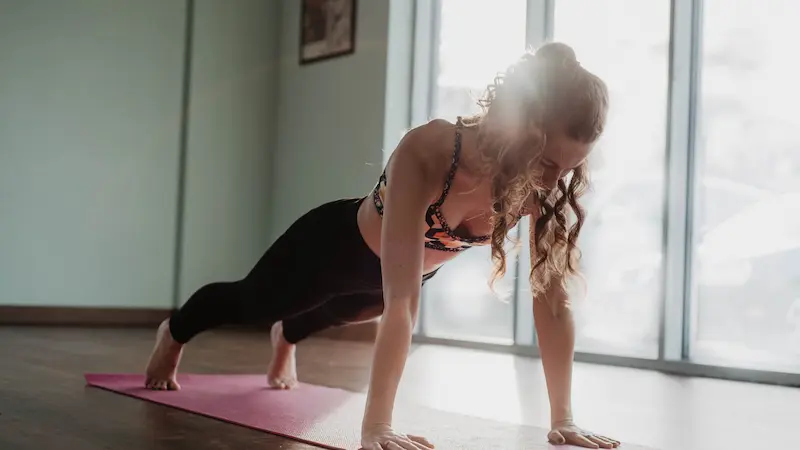
The plank is an excellent exercise for swimmers because it helps build strong core muscles. And as I’ve already mentioned throughout this article–a strong core is highly beneficial for all swimmers.
However, the plank is slightly different from most core exercises as it trains isometric core strength.
While swimming, this will help you hold a good body position in the water by teaching you how to brace your core muscles for long periods.
How to do a plank with proper technique:
- Start by lying on your stomach and prop yourself up on your elbows and toes.
- Engage your core muscles and lift your hips off the ground so that your body forms a straight line from head to toe.
- Hold this position for 30-90 seconds (or longer) and then lower back down to the starting position.
Plank variations:
- Straight arm full plank: Straighten your arms to make the exercise harder.
- Forearm full plank: In this variation, you alternate between the straight arm and the standard plank variations by continuously transitioning with one arm at a time. This helps develop extra shoulder strength.
- Plank with shoulder tap: Another plank variation for additional shoulder strengthening.
- Side plank: Good for developing extra strength in your oblique muscles.
- Rowing plank: Use light dumbells and add an alternating row for increased back strength.
- Stability ball plank: Helps to increase core stability. You can add light rotations to make this variation even harder.
- Spider-man plank: For this exercise, you alternate between bringing your knees towards your chest to increase the core activation. Make sure to keep the movement controlled.
For added comfort, consider performing this exercise on a yoga mat.
8. Kettlebell Swings
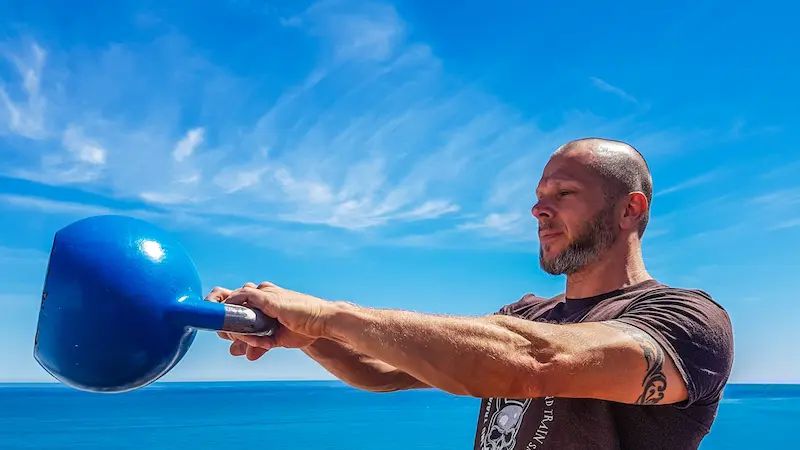
Kettlebell swings are an excellent exercise for swimmers because they are a tremendous full-body conditioning exercise and help build a strong posterior chain (back of the body).
This includes large muscle groups like the glutes, hamstrings, spinal erectors, upper back muscles, and core.
A strong posterior chain is vital for maintaining a strong streamline in the water to reduce drag. It also reduces injuries by combating poor posture, which many swimmers are known for due to the forward roll of the shoulders.
How to do kettlebell swings with proper technique:
- Start by standing with your feet shoulder-width apart.
- Hold a kettlebell with both hands in front of your waist.
- Hinge at the hips and push your butt back as you swing the kettlebell backward between your legs.
- Explode through the hips and squeeze your glutes at the top of the movement as you swing the kettlebell up to chest height.
- Allow the momentum of the kettlebell to carry it back down between your legs and repeat the movement.
- Make sure to keep your core engaged throughout the entire exercise, and don’t allow your lower back to round.
- Also, be sure not to swing the kettlebell too high as this can put unnecessary stress on the shoulders. I recommend bringing it up to about chest level.
9. Rows
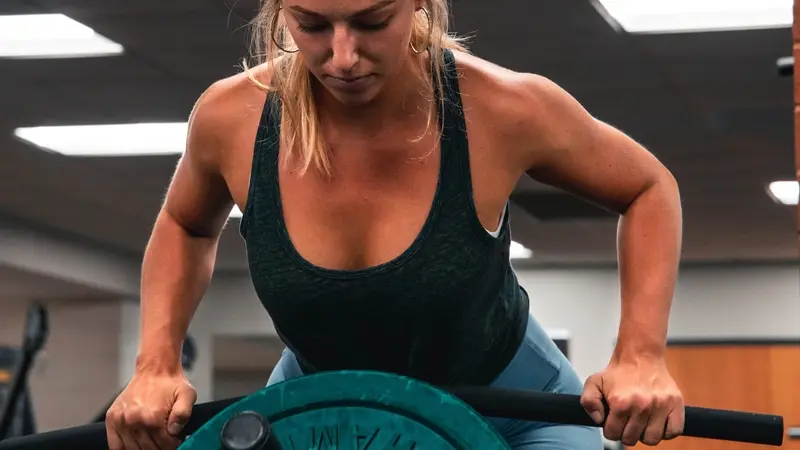
The row is another excellent back exercise for swimmers. It targets your lats–the large muscles on the sides of your back that swimmers are known for. And it also works your middle and lower trapezius, rhomboids, and rear deltoids.
Certain variations of the row can also help build core strength.
I recommend the unsupported dumbbell bent-over row, but you can opt for a barbell bent-over row or a machine row- whichever suits you best.
How to do a bent-over dumbbell row with the correct technique:
- Start by holding a dumbbell in each hand and bend your knees slightly
- Hinge forward at the hips and lower your torso until it’s almost parallel to the ground.
- Make sure to keep your back straight and core engaged throughout the entire exercise.
- From this position, row the dumbbells up to the sides of your chest.
- Make sure to keep your elbows close to your body.
- Squeeze your back muscles at the top of the movement, then lower the dumbbells to the starting position.
Dumbbell rows can be done with one arm at a time or with both arms simultaneously. One-arm rows are good for working each side of the back individually and can be done with a dumbbell or a kettlebell.
10. Wall Angels
Wall angels are a simple flexibility exercise to help open up the chest and shoulders. This is essential for swimmers since we tend to hunch forward due to the constant forward roll of our shoulders in the water.
This exercise also helps to improve posture and can help prevent injuries down the road.
How to do wall angels with proper form:
- Start by standing with your feet shoulder-width apart and your back flat against a wall.
- Raise your arms, so they’re parallel to the ground and press your palms and forearms flat against the wall.
- Lift your arms until they are facing directly upwards at about shoulder-width apart.
- Then, slowly lower your arms down towards your sides towards the starting position while keeping them close to the wall.
- Make sure to keep your core engaged and do not arch your back during the exercise.
11. Opposite Hand and Leg Lifts
Opposite hand and leg lifts is another simlpe mobility and strength exercise you can use in your upper-body dryland training. This exercise is excellent for engaging the upper and lower back, hip flexors, and shoulder muscles.
How to do opposite hand and leg lifts with proper technique:
- Start by lying flat on your stomach with your hands stretched out in front of you shoulder-width apart.
- Then lift your right arm and left leg simultaneously before switching to the opposite side and repeating for reps.
- Lifting your hips off the ground is essential when doing this exercise. Think about tilting your pelvis slightly inward to achieve this. You can also place small weight plates underneath your hips to serve as a cue to keep your hips lifted.
- To make this exercise harder, you can hold small dumbbells and add ankle weights.
Pro Strength Tip: Exercises too easy? Make them harder by increasing time under tension. Do this by performing exercises slowly. For example, lower down 3 seconds, then explode up. Or make both the eccentric and concentric phases slower. I recommend slowing things down by 3-5 seconds.
Example Upper Body Workouts for Swimmers
Beginner Upper Body Workout:
- Dynamic warmup
- Assisted pull-ups
- Negative push-ups
- Plank
- Medicine ball slams
- Opposite hand and leg lifts
- Wall angels
Intermediate Upper Body Workout:
- Dynamic warmup
- Negative pull-ups
- Spiderman push-ups
- Deadbug
- Kettlebell swings
- One-arm dumbbell rows
- Wall angels
Advanced Upper Body Workout:
Dynamic warmup
Regular pull-ups
Dumbell row push-ups
Plank variation
Dumbell floor press
Seated machine row
Kettlebell swings
Wall angels
Basic Upper Body Training Guidelines
Follow these guidelines to make the most of your upper body and dryland training.
How Often Should Swimmers Do Upper Body Dryland Exercises?
I recommend swimmers do dryland around 2-3 times per week, depending on your training load in the pool.
Sessions should be about 45 minutes to an hour in length.
Make sure to incorporate upper- and lower-body exercises and some good core exercises.
Ideally, each workout should be a full-body workout, but you can also choose to split it between upper- and lower-body sessions.
Example:
Week 1:
- Monday: Upper body workout
- Wednesday: Lower body workout
- Friday: Upper body workout
Week 2:
- Monday: Lower body workout
- Wednesday: Upper body workout
- Friday: Lower body workout
The Ratio Between Pulling and Pushing Exercises
Swimmers are generally hunched forward slightly due to the nature of the sport, which creates bad posture and increases the risk of injuries.
To combat this, I recommend a 2:1 or, at the very minimum, a 1:1 ratio between pulling and pushing exercises.
Pulling exercises include rowing variations and upper body exercises like pull-ups and lat pull-downs. Pushing exercises include movements like the dumbbell floor press and push-ups.
You can also combine them with hybrid upper body exercises for swimmers like the push-up row variation.
Reps, Sets, and Load
The number of reps you do will depend on your training goals.
Swimmers should have periods where they focus on strength gains and other periods where they focus on endurance or power. However, generally, the strength phase will be where you want to spend most of your time.
Why so, you might ask? Because to improve both power and endurance, you first need to improve your strength.
Over 4 weeks, your training might look something like this:
- 2 weeks strength focus.
- 1-week power/ explosiveness focus.
- 1-week endurance focus.
You can also decide to mix workouts with elements of power, strength, and endurance. However, having distinct periods where you focus on each separately would be beneficial.
Here’s how I would break that down regarding reps and load.
- Strength: 3-5 reps, heavy weight. You can add weight to bodyweight exercises like pull-ups and push-ups.
- Power: 5-15 reps, light or no weight, explosive movements.
- Endurance: 15-25 reps, light weights, or assisted variations like band pull-ups.
In terms of sets, I recommend 3-4 sets of each exercise for all phases. Or you can consider doing your workouts in a circuit style where you do 3-4 rounds of the entire workout with rest between each exercise and rounds.
Workouts should consist of about 5-8 upper body exercises for swimmers, and you should always warm up properly.
Compound Exercises
Compound exercises are exercises that use many muscle groups at a time. All of the upper body exercises for swimmers in this article are examples of compound exercises.
I generally recommend swimmers to primarily focus on these dryland exercises over isolation exercises that target a single muscle group at a time.
Isolation exercises have their place and can be a fun way to switch things up every now and then. Still, generally, it’s better to stick to the compounds.
Swim Faster with These Upper Body Exercises for Swimmers
Are you up to date on some of the best upper-body exercises for swimmers? Great! It’s time to get out there and start training. Remember to focus on quality over quantity, technique over weight, and always listen to your body.
If you don’t have access to a gym, no problem! You can do plenty of exercises at home with just your body weight and some basic equipment.
